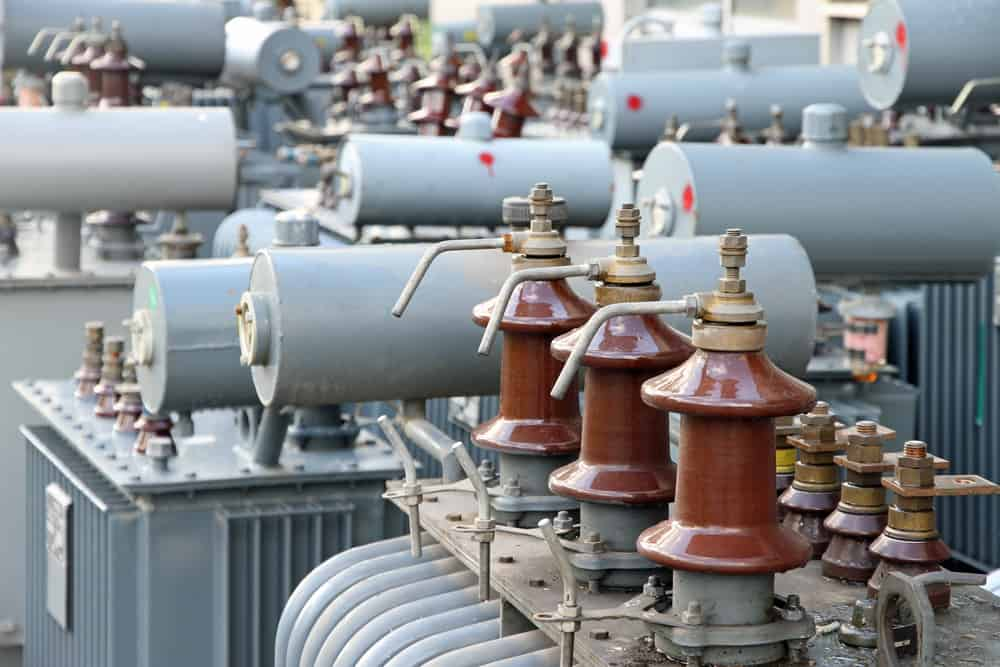
Substation – what is it, what is it used for and what are its types?
Substations are used wherever there is a transfer of electricity from the grid to the end user. It’s worth knowing how such a substation works, what it’s used for and what its types are. The most important information about substations can be found below.
What is a substation?
A substation may also be called a transformer station. This is an electrical substation where the distribution of electricity takes place. This takes place for different voltage levels.
The substation includes:
- transformer,
- medium voltage switchgear,
- low voltage switchgear,
- auxiliary equipment (depending on the station design).
A transformer is a device that allows to change AC voltage from higher to lower or vice versa. The transfer of alternating current electricity is carried out by means of induction from one electrical circuit to another, maintaining the original frequency (only an isolating transformer is an exception). The electrical switchgear, on the other hand, allows for safe connection, interruption and separation of electrical circuits. The substation can be powered either from a cable line or an overhead line.
What is a substation used for?
The basic purpose of a substation operation are two functions. The first is the voltage change and the second is the distribution of electricity, in order to deliver it to the end customer. These functions are inextricably linked to the way in which electricity is generated and the voltage level needed to supply equipment at the end users. The following sections include the stages in which electricity reaches consumers and the role of the substation in this process:
- Electricity generated in power plants, due to long distances, is transmitted to customers using the extra high voltage (220 to 400kV) and high voltage (110kV) grids.
- Then, thanks to the use of HV/MV substations, the voltage is reduced to medium voltage (from 10 to 30kV), which is used in local distribution lines or by MV receivers for direct supply of high-power electrical machines.
- In the final phase with the use of MV/LV substations, the voltage is reduced to low voltage, after which the electricity is sent directly to end users.
Division of substations
The types of substations are divided into:
- Pole-mounted substations
- Indoor substations
- Packaged substations
- Mobile substations
Pole-mounted substations are used mainly to supply rural and small housing estate customers from an overhead or cable MV grid. They are installed on concrete or reinforced concrete poles dedicated to this purpose.
Indoor substations differ from the previous type in that they are located in the interiors of residential, office or service buildings. They are adapted to the requirements of the building and are located in rooms specially prepared for this purpose.
Packaged substations can be considered as complete electrical equipment units. They include all elements of a power station, such as a transformer, MV switchgear, LV switchgear, measuring systems, internal installations, etc. Packaged substations can be additionally divided based on an external or internal service corridors.
Mobile substations are, as the name suggests, easy to move from place to place, transport and use in any location. They are equipped with all electrical devices as a standard substation, but additionally they are equipped with elements facilitating the transport of the substation.
Application of substations
As already mentioned, the basic place of application of substations is the National Power System. However, because of their functions they are also used in:
- industrial establishments,
- RES
- mining plants,
- construction sites (usually mobile substations),
- railway and tram station service points.
The places where stations are used can be listed infinitely. However, it should be remembered that the proper selection of an appropriate substation and its components requires the determination of the current and possible future conditions that occur in the power grid at the place of the designed substation.


 en
en  PL
PL  DE
DE  LT
LT  SV
SV  FR
FR  ES
ES  HU
HU  NO
NO  DK
DK  FI
FI  RU
RU 